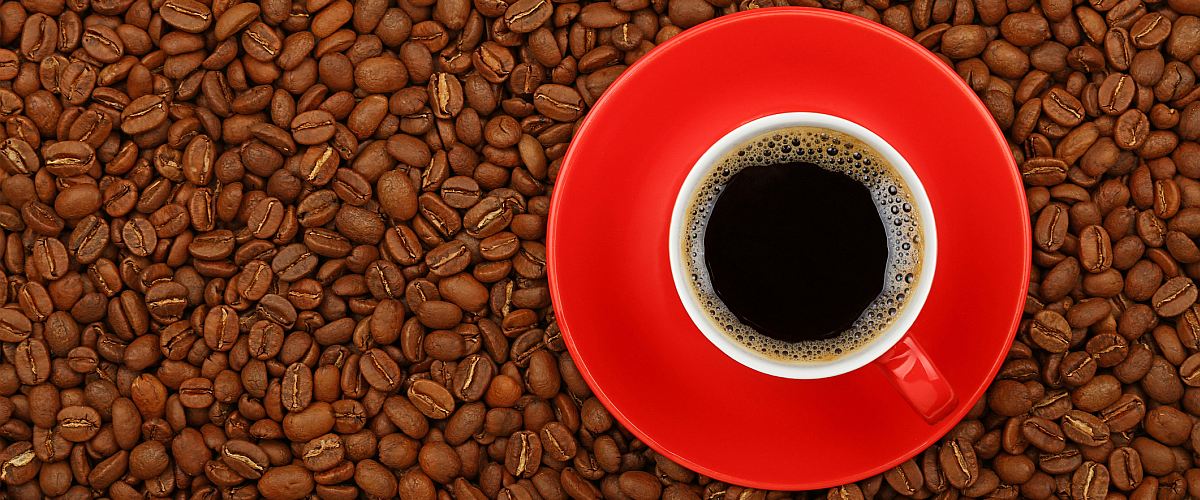The steamy aroma. The roasted taste. That welcome boost of energy. For many of us, mornings aren’t complete (or, let’s be honest, can’t even begin!) without a fresh cup of coffee.
From a health perspective, few foods generate more conversation, and that conversation is constantly changing thanks to scientific research. You’d be hard-pressed to find a home, restaurant or grocery store that doesn’t carry coffee, but does that mean it’s good for you? How much is too much? And are all coffee drinks created equal?
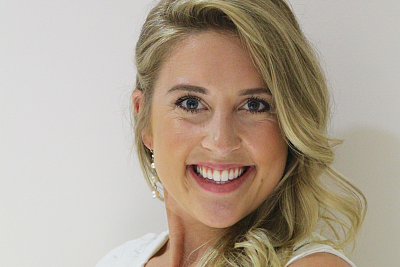
We turned to Aramark Registered Dietitian Nutritionist (RDN) Emily Ackerberg to learn the current recommendations about this popular beverage. Here she lays out the basics of coffee’s benefits, how caffeine affects our bodies and tips for keeping your fancy coffee drink from turning into a calorie bomb.
COFFEE: THE NEED-TO-KNOWS
First off, Emily boils down the key information about coffee and its notable benefits.
There’s no denying that coffee, in its purest form, comes with some powerful perks.
According to the American Heart Association, regular coffee drinking has been linked to a lower risk of coronary heart disease for women,” says Emily.
Coffee has also been shown to improve your mood, heighten your mental performance and focus and prevent dental cavities and headaches. There is also growing evidence that coffee may also reduce your risk for conditions ranging from type 2 diabetes and Parkinson’s to colon cancer, Alzheimer’s and depression.
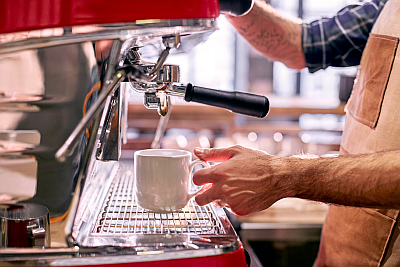
That’s just the beginning.
Americans get more disease-fighting antioxidants from coffee than any other food source–and those antioxidants become more potent after the beans are roasted. Caffeine can increase your adrenaline levels and release fatty acids to improve your performance in the gym and on the track. One cup of coffee contains several important nutrients, including riboflavin, manganese and potassium.
Perhaps the biggest surprise of all?
Coffee contains fiber–the soluble kind that’s also found in whole grains and can help lower your cholesterol. It dissolves in water, which is why you don’t notice it,” Emily explains.
While coffee will never be your main source of fiber, a gram or two per cup is another plus that can help contribute to your daily fiber goal since most of us don’t get enough.
However, like anything else, there sometimes can be too much of a good thing. “Drinking too much coffee can be dangerous,” Emily warns. “The caffeine can come with serious side effects, from heart palpitations to high blood pressure.” Too much caffeine also can cause problems with sleep and digestion, she adds, and make you overly nervous and irritable. “Pay attention to your body and know what it feels like when you’ve had too much of a good thing.”
CAFFEINE CALL-OUTS
To drink or not to drink? “Most healthy adults can safely have up to 300 milligrams of caffeine a day, which is about three cups of coffee,” Emily advises. “The best way to track your caffeine consumption is to know how much is actually in your favorite caffeinated drinks.”
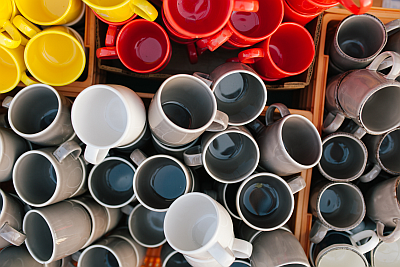
One ounce (or one shot) of espresso contains about 60 milligrams (mg), while one ounce of regular brewed coffee has closer to 15mg. That means your double-shot latte or 8-ounce cup can easily reach 120mg of caffeine. Keep in mind, Emily adds, that the amount of caffeine varies among coffee brands and varieties, so check the label.
Also, schedule your caffeine consumption early in the day. Enjoy it in the morning or early afternoon and then go caffeine free so you aren’t still caffeinated by the time you go to sleep.
About 10 percent of the population has been found to be hypo-sensitive to caffeine, Emily notes. Their bodies metabolize caffeine very efficiently to the point where they can consume higher than normal amounts with little effect. For others people, it could take their bodies twice as long to metabolize so even small amounts, for example 100mg, could cause symptoms like insomnia, the jitters and increased heartbeat.
COFFEE-SHOP CLUES
Now that cafés have become our second homes, coffee isn’t just coffee
anymore. “The three-cups-a-day guideline only pertains to plain black coffee,” Emily
explains. “And many gourmet coffee drinks have very little actual coffee in
them. They come with little nutritional value, but sometimes hundreds of calories.”
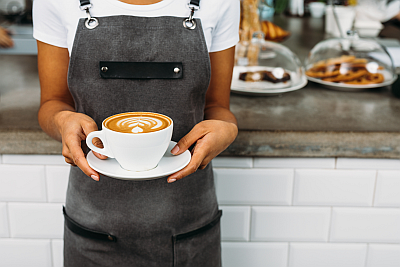
In other words, what you add to your cup of joe makes all the difference. Coffee purists have it easy. For the rest of us, here are a few ways to take control of a coffeehouse order:
- Go down a size. Make that large cup a medium, or that medium a small, and you’ll cut your fat and sugar intake by one-third to one-half, Emily says.
- Say no to added fat. Request low-fat or skim milk instead of whole milk or cream–and take a pass on the whipped cream (sorry).
- Be sugar-smart. A little sweetness is fine, but try to go sugar-free, or at least cut back on the amount of sugar you add over time. You can also add flavor with natural extracts (almond, vanilla and orange are all yummy) and spices like ginger, allspice, cinnamon or nutmeg.
WARM UP AT HOME
Emily has other tried-and-true tips for brewing up at home. “When you choose what goes into your coffee, you may come to realize that you prefer a simpler concoction than you get at the local café, with less added sugar,” Emily points out.
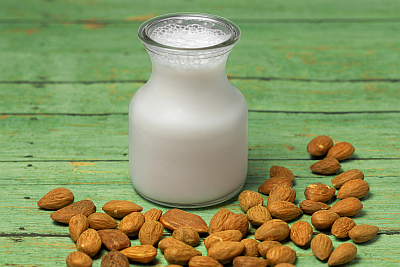
- Become your own barista. Let the coffee shop menu inspire you to experiment at home. Try adding extracts and spices (see above) in combination with a dairy alternative. Emily is especially fond of almond and coconut milk.
- Try plant-based options. From almond and cashew to soy and rice, more and more milk alternatives are coming on the market–and for good reason. “Not only are these products good for vegans or people with dairy intolerances or allergies, but they tend to be lower in calories,” Emily says. For example, swap out your 2% milk for unsweetened almond milk and you’ll cut the calories by one-third.
- No coffee? No problem. Maybe you’re not a coffee lover, or maybe you like to switch things up. You can get your daily health benefits and caffeine fix elsewhere, Emily reminds us. “Green and black tea, and 70% or higher dark chocolate, are rich in powerful antioxidants and contain caffeine. We’re even seeing protein bars and other snacks made with green tea extract, which provides a jolt of caffeine.” Just remember, she says, to count all these caffeine sources towards your daily total.
And what about energy drinks that contain caffeine?
Energy drinks may give you a pick-me-up, but they are typically very high in sugar–40 to 60 grams per serving, depending on size. Proceed with caution,” Emily advises.
Note: Since everyone’s health history and nutritional needs are so different, please make sure that you talk with your doctor and a registered dietitian to get advice about the diet and exercise plan that‘s right for you.

